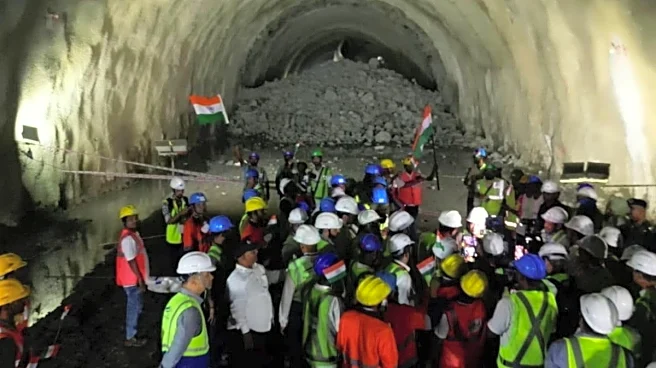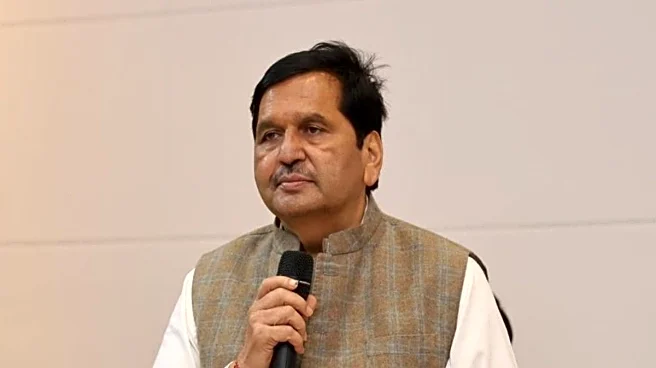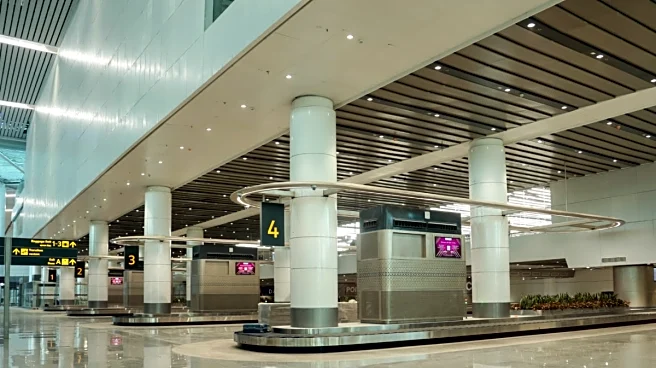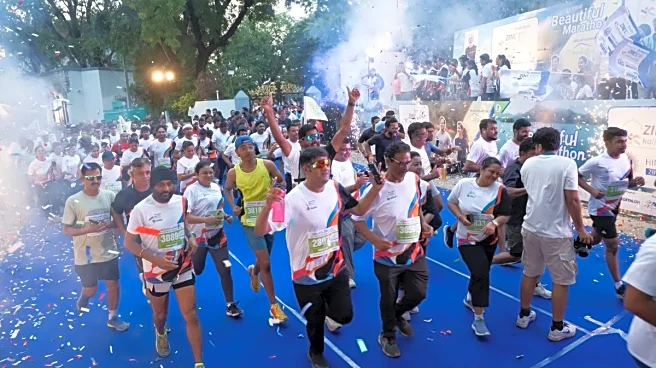What is the story about?
Railway Minister Ashwini Vaishnaw clarified on September 20 that the 508-kilometre Mumbai-Ahmedabad high-speed rail corridor will not be used for operating Vande Bharat trains. Speaking to the media in Thane, during event held to celebrate a key milestone marking the breakthrough of a section of the 21-kilometre tunnel for the bullet train project, the minister said that the technologies behind the Vande Bharat and bullet trains are fundamentally different.
"The Bullet train and Vande Bharat trains operate on two different platforms," Vaishnaw said, effectively putting to rest recent speculation in some sections of the media. There had been reports suggesting that the high-speed version of the Vande Bharat train, currently under development by Bharat Earth Movers Limited (BEML), would be deployed on the Mumbai-Ahmedabad route.
In September 2024, the Ministry of Railways tasked BEML with designing and manufacturing India's first Vande Bharat train capable of running at speeds of up to 250 kilometres per hour. Since the announcement, various experts have speculated that the Mumbai-Ahmedabad corridor, being the only railway stretch in India designed to accommodate such high-speed operations, would be a natural choice for its deployment.
Also read | Surekha Yadav’s last train: The historic journey of India’s first woman loco pilot concludes
However, Vaishnaw dismissed speculations, reiterating that the bullet train project will instead utilise the Japanese E5 Series Shinkansen model, known as the E-10, which will be imported as per the bilateral agreement between India and Japan.
“A team from Japan, along with the Vice Minister, was in Delhi to review the project. He expressed happiness after reviewing the progress of the project," the minister said.
Addressing concerns raised by residents living near the tunnel construction zone, Vaishnaw responded to reports of damage to homes caused by ongoing work. He explained that a comprehensive survey, in consultation with experts from the Indian Institute of Technology (IIT), had already been conducted to assess the need for technological improvements.
Also read | Train travel: 81 crore reservations recorded by Indian Railways in 2024-25
He mentioned that an independent assessment had been carried out on 78 houses where structural cracks were observed. "The team has suggested many precautions for residences situated within a 30-metre radius of the project," he said. Vaishnaw added that steps are being taken to ensure locals are better informed about the measures necessary for safe construction practices near the tunnel route.
"I have asked the team to formulate a standard document so that people residing in the tunnel vicinity should have a clear knowledge of those precautions during house construction,” the minister explained and elaborated that the standardised document will be submitted to state governments of Maharashtra and Gujarat for approval and subsequent implementation.
"The Bullet train and Vande Bharat trains operate on two different platforms," Vaishnaw said, effectively putting to rest recent speculation in some sections of the media. There had been reports suggesting that the high-speed version of the Vande Bharat train, currently under development by Bharat Earth Movers Limited (BEML), would be deployed on the Mumbai-Ahmedabad route.
In September 2024, the Ministry of Railways tasked BEML with designing and manufacturing India's first Vande Bharat train capable of running at speeds of up to 250 kilometres per hour. Since the announcement, various experts have speculated that the Mumbai-Ahmedabad corridor, being the only railway stretch in India designed to accommodate such high-speed operations, would be a natural choice for its deployment.
Also read | Surekha Yadav’s last train: The historic journey of India’s first woman loco pilot concludes
However, Vaishnaw dismissed speculations, reiterating that the bullet train project will instead utilise the Japanese E5 Series Shinkansen model, known as the E-10, which will be imported as per the bilateral agreement between India and Japan.
“A team from Japan, along with the Vice Minister, was in Delhi to review the project. He expressed happiness after reviewing the progress of the project," the minister said.
Addressing concerns raised by residents living near the tunnel construction zone, Vaishnaw responded to reports of damage to homes caused by ongoing work. He explained that a comprehensive survey, in consultation with experts from the Indian Institute of Technology (IIT), had already been conducted to assess the need for technological improvements.
Also read | Train travel: 81 crore reservations recorded by Indian Railways in 2024-25
He mentioned that an independent assessment had been carried out on 78 houses where structural cracks were observed. "The team has suggested many precautions for residences situated within a 30-metre radius of the project," he said. Vaishnaw added that steps are being taken to ensure locals are better informed about the measures necessary for safe construction practices near the tunnel route.
"I have asked the team to formulate a standard document so that people residing in the tunnel vicinity should have a clear knowledge of those precautions during house construction,” the minister explained and elaborated that the standardised document will be submitted to state governments of Maharashtra and Gujarat for approval and subsequent implementation.
Do you find this article useful?
/images/ppid_59c68470-image-175846254537129598.webp)


/images/ppid_59c68470-image-175831504618184784.webp)

/images/ppid_a911dc6a-image-1758367029102741.webp)




/images/ppid_a911dc6a-image-175837733522955296.webp)





